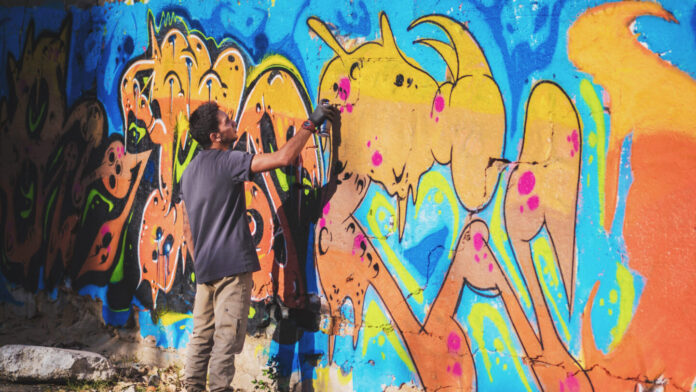By The Frontpage Journal
In recent years, Colombo’s urban landscape has been transformed by a wave of street art that breathes new life into its walls and public spaces. This vibrant movement is more than just colorful decoration—it is a powerful form of expression that reflects the city’s evolving identity, social issues, and youthful energy. As murals and graffiti spread across neighborhoods, Colombo is embracing street art as a fresh voice in its cultural conversation.
Historically, public art in Sri Lanka was often limited to religious murals and traditional crafts. However, the emergence of street art represents a shift towards more contemporary, accessible, and sometimes provocative forms of creativity. Local artists, many inspired by global urban art trends, use walls as canvases to communicate stories of hope, resistance, heritage, and everyday life.
Colombo’s street art scene is diverse, spanning from large-scale murals depicting historical figures and cultural symbols to bold abstract pieces and satirical graffiti addressing political and environmental issues. Neighborhoods like Colombo 7 and Pettah have become hubs where artists collaborate with community members to create works that beautify spaces and foster dialogue.
These murals serve multiple purposes. They celebrate Sri Lankan culture by featuring motifs from folklore, nature, and history. They also highlight contemporary concerns such as urbanization, climate change, and social justice. In some cases, street art acts as a form of protest or commentary, challenging viewers to reconsider entrenched views or policies.
The growth of this art form has been supported by initiatives involving local governments, cultural organizations, and private sponsors who recognize the potential of street art to revitalize urban areas. Festivals and workshops invite artists from Sri Lanka and abroad, creating opportunities for skill-sharing and cultural exchange. These events also attract tourists eager to explore Colombo’s vibrant public galleries.
Community engagement is a key aspect of the street art movement. Artists often collaborate with residents to ensure that murals resonate with local identity and values. This participatory approach fosters pride and ownership, transforming neglected spaces into landmarks of collective creativity.
Despite its growing popularity, street art in Colombo faces challenges, including legal restrictions, vandalism, and debates over artistic freedom versus public sensibility. Balancing expression with respect for diverse audiences remains an ongoing conversation.
For foreign visitors, Colombo’s street art offers an accessible way to experience the city’s dynamic culture beyond traditional museums and historic sites. Each mural tells a story, invites reflection, and showcases the talent and spirit of Sri Lanka’s emerging creative generation.
In shaping a new cultural identity through walls and colors, Colombo’s street art scene symbolizes change and possibility. It captures a city in motion—one that honors its roots while boldly embracing the future, one brushstroke at a time.




